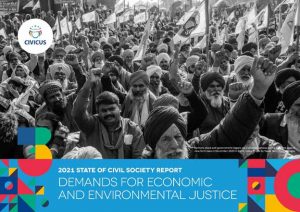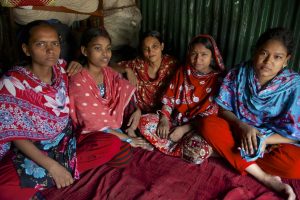By Ramesh Jaua“World leaders, high-ranking UN officials, city mayors and representatives of the civil society from around the globe, gathered for a summit at Hiroshima and Nagasaki to mark the seventieth anniversary of the atom bombing of two Japanese cities, declared that nuclear weapons will be outlawed by 2020, and called upon all governments to agree at the earliest on a nuclear weapons convention.”A press release in August 2015 might read somewhat like this if the momentum building up for ushering in a world free of nuclear weapons continues and Soka Gakkai Internatonal (SGI) President Daisaku Ikeda’s proposal for a nuclear abolition summit to be held in 2015 on the anniversary of the atomic bombings of Hiroshima and Nagasaki is translated into action.
He reiterated the proposal in a message to an exhibition titled ‘Everything You Treasure: For a World Free From Nuclear Weapons’ on September 24, 2013 in Hiroshima City, “an eternal bastion of peace”, as he termed it. SGI – with members in 192 countries and territories around the world – has been engaged in peace activities since the public call at the height of the Cold War in 1957 by its second president Josei Toda for prohibition and abolition of nuclear weapons,
In the 1980s, with the support of the cities of Hiroshima and Nagasaki, SGI created the exhibition ‘Nuclear Arms: Threat to Our World’, aiming to raise public awareness of the grave consequences of nuclear weapons. As part of a campaign to support the United Nations, the exhibition toured different parts of the world including the nuclear weapons states.
In 2007, SGI launched its grassroots antinuclear campaign ‘People’s Decade for Nuclear Abolition’, commemorating the 50th anniversary of the antinuclear declaration made by Toda. The exhibition ‘From a Culture of Violence to a Culture of Peace: Toward a World Free From Nuclear Weapons’ was created by SGI as the first project to launch this campaign.
It examined the nuclear threat from the perspective of human security. The exhibition, after touring more than 230 cities in 31 countries and territories around the world, completed its successful showing in Bahrain in March 2013 in the presence of Bahrain’s Minister of Foreign Affairs.
Everything You Treasure – For a World Free From Nuclear Weapons today builds on those experiences. “The exhibition, realized with the invaluable support of the International Campaign to Abolish Nuclear Weapons (ICAN), aims to foster a deep awareness of the consequences of nuclear weapons by reexamining the challenges they pose from twelve different perspectives, including ecological integrity, human rights and gender,” said Hirotsugu Terasaki, Vice President of Soka Gakkai and Executive Director, SGI Peace Affairs:
The English-language version of the exhibition was first launched at the 20th World Congress of the International Physicians for the Prevention of Nuclear War (IPPNW) in Hiroshima in 2012. It has since been shown at ICAN’s Civil Society Forum in Oslo, Norway, in March 2013, and later at the UN Office at Geneva, during the Second Preparatory Committee (PrepCom) for the 2015 Nuclear Non-Proliferation Treaty (NPT) Review Conference in April 2013.
As Ikeda stressed, the organizers of the exhibition feel “acutely the importance of sharing with the world the message of the hibakusha (survivors of atom bombs) and all the citizens of Hiroshima – that the catastrophic tragedy of nuclear bombing must never be repeated and that humankind cannot coexist with nuclear weapons.”
“In today’s world, beset by the growing threat of nuclear proliferation, the spirit of Hiroshima represents a fundamental and universal principle to which all people, of all backgrounds and nationalities, must return if we are to make peace a reality,” the SGI president added.
A tipping point
Whether the imaginary press release is realized in August 2015 or not, recent developments suggest that the nuclear debate is approaching a tipping point. The discourse is finally reframing the issue of nuclear weapons from the Cold War focus on state security through deterrence to efforts for nuclear non-proliferation and disarmament based on a frank recognition of the humanitarian impact of nuclear weapons.
A landmark is May 2012, when 16 countries, led by Norway and Switzerland, issued a joint statement on the humanitarian dimension of nuclear disarmament, stressing: “All states must intensify their efforts to outlaw nuclear weapons and achieve a world free of nuclear weapons.” There have since been more than one similar joint statements and the most recent, the Joint Statement on the Humanitarian Impact of Nuclear Weapons, has been signed by 80 governments.
Statements made by the International Red Cross and Red Crescent movement gave a significant impetus to shifting the discussion and highlighting the need to reframe the nuclear weapons debate in humanitarian terms. Also the High-level Meeting of the UN General Assembly on Nuclear Disarmament on September 26, 2013 has underscored the need for a nuclear weapons free world.
“Given the intensifying interrogation of the continued existence of nuclear weapons on humanitarian grounds, it is vital that both nuclear-weapon and non-nuclear-weapon states effect a decisive shift in policy,” argues Ikeda.
“This is necessary if we are to move forward toward the outlawing and abolition of nuclear weapons. And to grow momentum toward this end we must expand the solidarity of people around the world who share the determination of Hiroshima’s citizens that their tragic experience must never be visited upon anyone else,” the SGI president adds.
Against this backdrop, it was particularly significant that the inspiring 2013 Hiroshima Peace Declaration described the atomic bomb as “the ultimate inhumane weapon and an absolute evil”. It added: “The hibakusha, who know the hell of an atomic bombing, have continuously fought that evil. To that end, the city of Hiroshima and the more than 5,700 cities that comprise Mayors for Peace, in collaboration with the UN and like-minded NGOs, seek to abolish nuclear weapons by 2020 and throw our full weight behind the early achievement of a. nuclear weapons convention,” said Matsui Kazumi, Mayor of the City of Hiroshima at the memorable exhibition.
In a clarion call the Mayor added: “Policymakers of the world, how long will you remain imprisoned by distrust and animosity? Do you honestly believe you can continue to maintain national security by rattling your sabers? Please come to Hiroshima. Encounter the spirit of the hibakusha. Look squarely at the future of the human family without being trapped in the past, and make the decision to shift to a security based on trust and dialogue.”
The exhibition indeed reexamines the threat nuclear weapons pose to today’s world from multiple perspectives: ecological integrity, economic security, human rights, gender and the social responsibility of science. SGI and ICAN hope that the exhibition will help foster and expand solidarity for the elimination of nuclear weapons “based on a consciousness that nuclear weapons are something deeply and personally relevant to each of our lives”.
As the SGI President argues, “To build a world free of nuclear weapons requires more than removing existing nuclear threats. It is the challenge to empower citizens to take the initiative in creating an era of peaceful coexistence – realizing a sustainable global society in which all people, including the members of future generations, can fully experience the dignity of their own lives and the lives of others.”
In this context, Hiroshima Governor Hidehiko Yuzaki rightly pointed out at the exhibition: “Hiroshima is promoting a message of peace throughout the world. At the same time, we are currently working to build a mechanism that will sustain and support peace-building efforts around the world. We wish to cooperate with like-minded organizations in Japan and abroad to consolidate efforts toward this goal and make Hiroshima become the hub for promoting global peace.”- Eurasia Review




